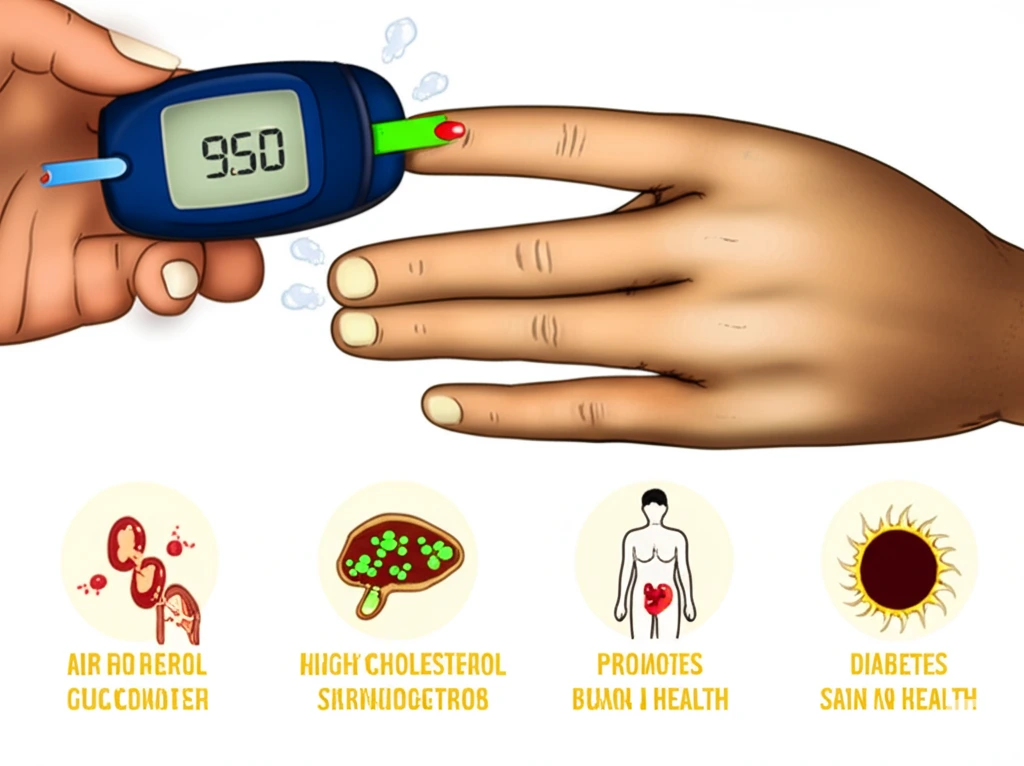🍬 Early Symptoms of Diabetes and How to Prevent It Naturally

Diabetes is a chronic disease that develops gradually but poses a serious risk to quality of life. Unfortunately, many people do not realize they have diabetes until symptoms have become severe. Recognizing the early signs of diabetes is essential to prevent and manage it effectively.
This article discusses the early signs of type 2 diabetes, its risk factors, and natural prevention steps you can take daily, even from home.
🧪 What is Diabetes?
Diabetes is a condition where blood sugar (glucose) levels are too high because the body cannot produce or use insulin effectively. There are two main types:
- Type 1 Diabetes: The body does not produce insulin at all, usually appearing at a young age.
- Type 2 Diabetes: The body does not produce enough insulin or does not use it properly (insulin resistance). This type is most common among adults.
⚠️ Common Early Symptoms of Type 2 Diabetes
- Frequent Thirst and Urination – High blood sugar makes the kidneys work harder to remove excess glucose, causing dehydration and constant thirst.
- Fatigue – Glucose is not entering cells to be converted into energy, making the body feel tired even with minimal activity.
- Slow-Healing Wounds – High blood sugar slows down wound healing and increases the risk of infections.
- Frequent Hunger (Polyphagia) – Even after eating, the body feels hungry because cells are not getting the energy they need.
- Blurred Vision – High sugar levels can change the fluid balance in the eyes, affecting focus.
- Tingling in Hands and Feet – Diabetic neuropathy can cause numbness or tingling sensations.
- Recurring Infections – Frequent yeast infections or urinary tract infections can be early warning signs.
🧬 Who is at Risk?
- Over 40 years old
- Family history of diabetes
- Overweight or obese
- Lack of physical activity
- High-sugar and high-fat diet
- High blood pressure and cholesterol
🍎 How to Prevent Diabetes Naturally
🍽️ 1. Maintain a Healthy Diet
A. Choose Complex Carbohydrates
Replace white rice with:
- Brown rice
- Sweet potatoes
- Oats
- Corn
B. Increase Fiber Intake
- Leafy greens (spinach, broccoli)
- Fruits (apples, oranges, pears)
- Legumes
- Whole grains
C. Limit Added Sugar
- Packaged sweet tea
- Sweet bread
- Candy
- Syrups
Use natural sweeteners like stevia if necessary.
D. Consume Healthy Fats
- Olive oil
- Avocado oil
- Virgin coconut oil (in moderation)
🏃♂️ 2. Exercise Regularly
Physical activity helps the body use glucose more efficiently. Recommended activities include:
- Brisk walking (30 minutes)
- Leisure cycling
- Diabetes-friendly aerobics
- Beginner yoga
😴 3. Get Enough Sleep
Sleeping less than 6 hours a night can cause insulin resistance.
- Go to bed and wake up at the same time daily
- Avoid gadgets 1 hour before bedtime
- Reduce bright lights and noise
🧘♀️ 4. Manage Stress
- Breathing exercises
- 5–10 minutes of meditation
- Morning or evening walks
- Gratitude journaling
🩺 5. Regular Blood Sugar Checks
If at high risk, test at least every 6 months:
- Fasting Blood Sugar (FBS) – <100 mg/dL
- 2 Hours Post-Meal (PPBS) – <140 mg/dL
- HbA1c – <5.7%
📌 Conclusion
Diabetes is serious but preventable. By recognizing early symptoms such as constant thirst, fatigue, and slow-healing wounds, you can take proactive steps to protect your health. A balanced diet, regular exercise, good sleep, and stress management are the main pillars of natural diabetes prevention. Start now—don’t wait until symptoms worsen.
